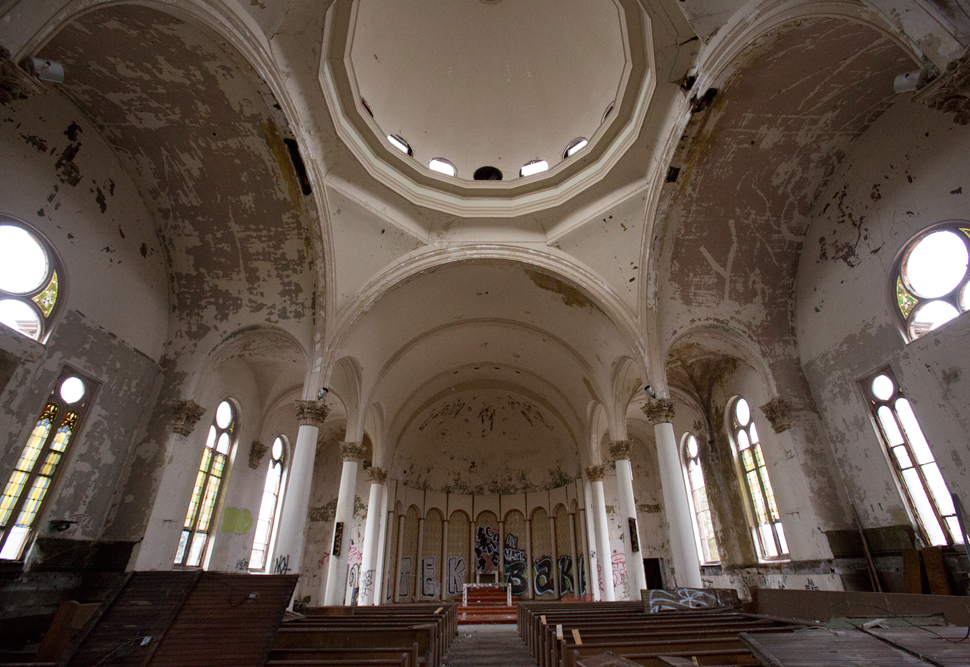
these houses of God
stand mute, often crumbling



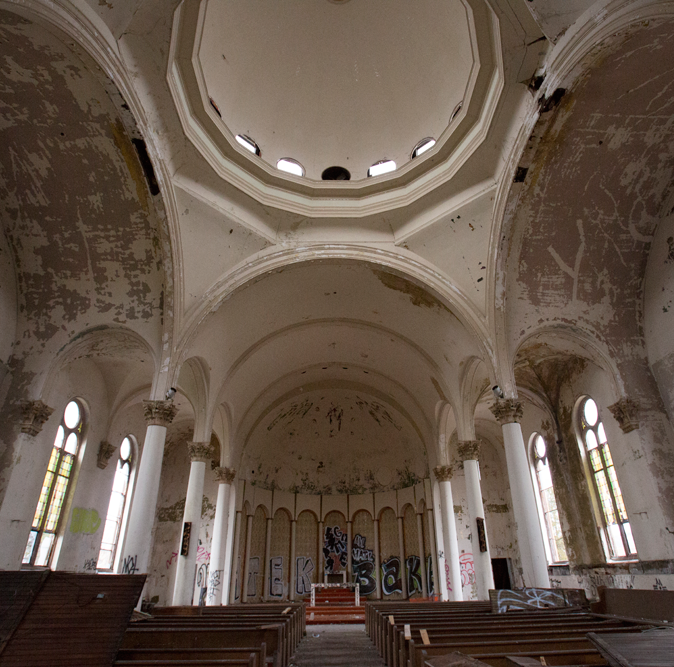
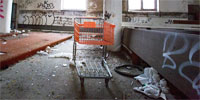
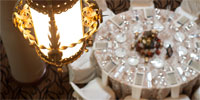
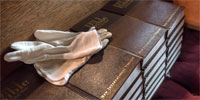
As they gathered over a banquet of roast chicken and rissole potatoes on May 30, 1948, members of Our Lady Help of Christians Catholic Church had every reason to think the future of their Larimer parish would be as golden as the 50th anniversary they were celebrating that night.
In its first half century, the parish had been a spiritual and cultural hub for the Italian immigrant community, officially witnessing some 2,918 marriages and 13,125 baptisms
And the landmark sanctuary — with its deep, round-arched windows and its trio of golden-colored domes — stood as a point of pride for the neighborhood.
“May Divine Providence grant to the parish of Our Lady Help of Christians continuance of grace, that its future may be no less fruitful and its history no less glorious in the annals of eternity,” the anniversary program said.
But the parish would close its doors just over 40 years later, with many of its congregants having long since moved to eastern suburbs and blended into the American melting pot.
The sanctuary had a second life as home to an independent church before it, too, closed in 2008 and put the building on the market. Since then the church has stood silent, its windows and doors boarded up like those of some other houses on its block. Ragged vines cling to the church walls, graffiti mars the Corinthian pillars, and there’s more tarnish than gleam to the domes. Inside, the bare, cavernous sanctuary has been strewn with litter and marred by blasphemous graffiti.
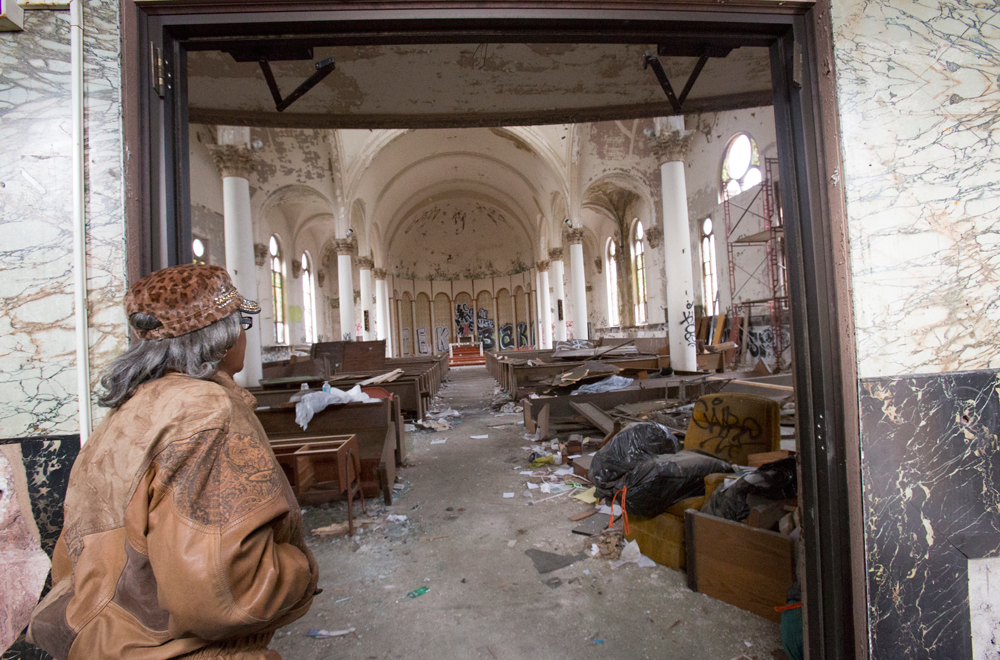
While the sanctuary’s story is unique, the arc of its rise and fall is familiar.
Throughout the older neighborhoods of Pittsburgh and surrounding communities, and in cities throughout the North and Midwest, many historic sanctuaries have fallen silent, their congregations dispersed.
Within the Pittsburgh city limits alone, the Post-Gazette has found nearly two dozen former churches and synagogues that currently sit unused. Some are well-maintained, others are deteriorating to almost dangerous levels.
That tally doesn’t count the additional shuttered sanctuaries throughout other Allegheny County municipalities, or ones like the former Holy Trinity Catholic Church in Duquesne, recently demolished after storm damage dealt a mortal blow to the decaying structure.
Nor does it count the many others in and around Pittsburgh that have been renovated and now serve as restaurants, banquet halls or other uses. Some become landmarks in their new life. They include Church Brew Works in Lower Lawrenceville — a restaurant reminiscent of a German-style beer hall, set amid stained glass and large brewing kettles — and the Grand Hall at the Priory in East Allegheny, which has hosted everything from wedding receptions to boxing matches. Both are in former Catholic churches.
And some vacant sanctuaries remain in limbo, such as the historic former Albright United Methodist Church in Bloomfield, now at the center of a dispute between preservationists and its Methodist owners, who say the cost of restoration is prohibitive and want to sell it to a developer who plans to raze and replace it with a retail development.
Number of empty churches to grow
The supply of surplus houses of worship will soon greatly expand.
The Roman Catholic Diocese of Pittsburgh is considering the closure of dozens of its church buildings across six counties, the biggest restructuring since it shuttered Our Lady amid an earlier wave of closings in the early 1990s.
The diocese says that when it deconsecrates a church, it typically removes sacred objects and maintains the structure until it’s sold, although sometimes buildings later deteriorate under new ownership.
The diocese is contending with a steep decline in priests and church participation, as well as demographic pressures — people moving to newer suburbs, families having fewer children, young adults drifting away from religion with uncertain prospects of ever returning.
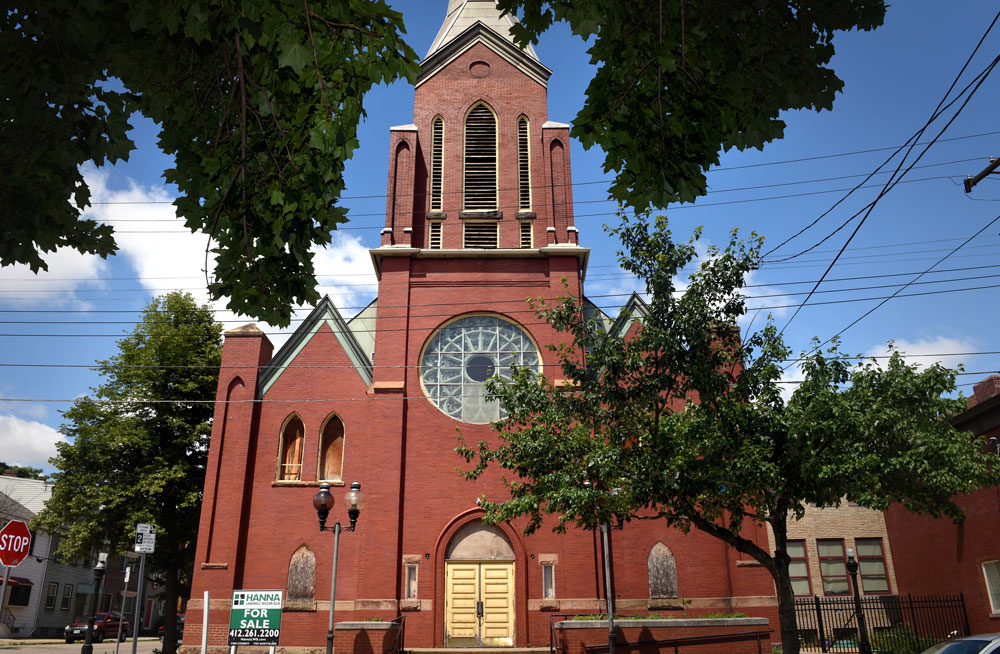
Similar factors are pressing on other historic religious bodies that often built sanctuaries in neighborhoods where their people no longer reside in large numbers. Episcopal, Methodist, Presbyterian, Lutheran, Eastern Orthodox, Byzantine Catholic and various Jewish denominations have closed multiple sanctuaries in urban neighborhoods and smaller cities and towns.
Especially affected are old immigrant neighborhoods that once re-created the sacred map of Europe in a tight jumble of steeples. But it’s also true of small downtowns whose historic supply of “First” churches often exceeds the demand.
Two former Presbyterian sanctuaries in Carnegie now host a banquet hall and a mosque. Baptist, Methodist and Presbyterian churches in the same Dormont neighborhood closed within a few months of each other in 2013 and 2014; one is now for sale, another is becoming a Buddhist temple and the third is now a campus for a non-denominational church.
The sacred landscape is undergoing a re-mapping that earlier worshipers could barely have imagined when they built their brick, stone or wooden sanctuaries to endure practically as long as the eternity proclaimed within their walls.
“In their mind, they were building for generations,” said the Rev. Charles Bober. He’s a former pastor of St. John Vianney Catholic Church in Allentown, which closed earlier this year due to declining numbers. “They just never would have thought their community would change.”
Gem of the architectural fabric
But they do — sometimes tumultuously when steel mills close, sometimes gradually when people filter out to suburbs or just drift away from the old-time religion.
And some see that as a loss not just to congregations but to their wider communities.
Often, a house of worship is “the greatest form of architecture on a given street,” said Jack Schmitt, the former longtime chair of the religious architecture heritage committee of Preservation Pittsburgh. A decaying landmark church can drag down a neighborhood, and a healthy one can lift it up, he said.
“When you come outside your door in a city area, you almost always see a church, and it adds to the architectural fabric to which our children are exposed. It makes their imagination soar,” said Mr. Schmitt, who helped spearhead the restoration of the landmark Calvary United Methodist Church in Allegheny West and has consulted with others seeking to restore historic sanctuaries.
A house of worship “makes the people feel secure in the neighborhood because it reminds them of the presence of God, even if they’re not parishioners, even if they’re not religious,” Mr. Schmitt said.
Robert Jaeger, president of the Philadelphia-based Partners for Sacred Places, said houses of worship have a “halo effect” on their neighborhoods via direct spending by congregants, boosting social cohesion or making the street more attractive for other investors.
“There’s an economic value to these places, there’s a cultural value, there’s a streetscape value, there’s a social-service value,” said Mr. Jaeger. “Do we really want to see all these places gone?”
But keeping them in place is costly. Beautiful buildings age and decay over generations, dwindling congregations strain to replace ancient, inefficient heating systems, old buildings often aren’t suited to modern standards of wheelchair access and other uses. Air-conditioning is often out of reach.
Mr. Jaeger’s organization tries to help struggling congregations stay in operation through such means as sharing their space — and expenses — with civic organizations involved in arts, education or social services such as child care.
But the headwinds are strong, he acknowledged, and not just in cities.
“Even the older suburbs were once considered immune but are starting to face the same issues,” Mr. Jaeger said.
When neighborhoods change
The issue of church closings often is closely tied with those of race and class. Many closed sanctuaries, such as Our Lady, declined when white parishioners moved out of a neighborhood and people of color, often poorer, moved in. Sometimes a locally based congregation will purchase the building, but it may lack the resources to maintain it. And churches are often not the only shuttered buildings.
“There is so much vacancy as far as other houses, other large commercial buildings. There are two vacant schools in the neighborhood,” said Demi Kolke, community development manager of Operation Better Block, an organization focused on Homewood revitalization.
But many other churches do thrive in Homewood, she said, drawing not just locals but outsiders. If more came, they might become more invested in the neighborhood’s health. “Where people worship, where they pray is oftentimes where they will be comfortable exploring more,” she said.
She hopes that denominations consider the community impact of a church closing.
“I can understand the business side of it,” such as the availability of funding and clergy. But keeping a sanctuary open “does have tremendous value” to its neighbors.
She cited the case of the Bible Center Church, which is restoring a vacant sanctuary across from Faison Arts Academy in South Homewood. The church plans to use the historic structure for everything from student programs to training of teachers and parents, with an emphasis in such areas as science, technology and math.
To be sure, new sanctuaries are being built in growing suburbs, and many of them thrive.
Father Bober has seen that first-hand now as pastor of fast-growing St. Kilian Parish in Cranberry, which in September dedicated a new church (and partly adorned it with artifacts from shuttered churches, including St. John Vianney.) Evangelical Protestant congregations known as megachurches have built large sanctuaries, typically in auditorium-like settings with large video screens and little of the ornamentation associated with old churches.
Shifts in worshipers
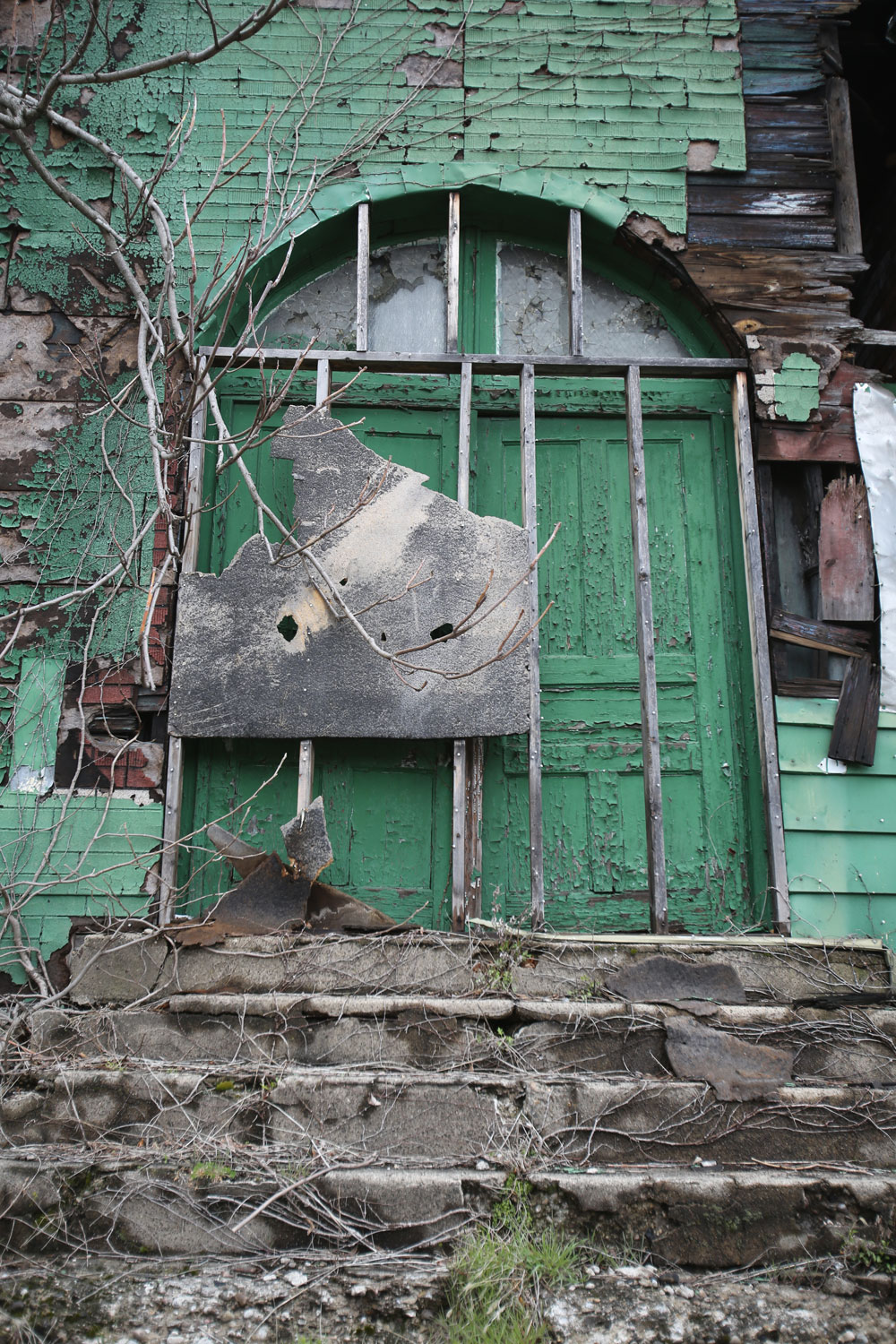
Overall, though, growth is the exception.
Indeed, while suburban migration and other demographics explain some of the decline in older houses of worship, an undeniable factor is the decline of worship itself.
Nearly a quarter of American adults, and a third of young ones, answer “nothing in particular” when asked their religious affiliation, according to a 2015 Pew Research Center report. In 1990, fewer than 1 in 10 said so.
Catholics and mainline Protestants are declining as a share of the population, the Pew report said, while evangelical Protestants are holding their own.
Catholic sacramental observance is down significantly, the Diocese of Pittsburgh says.
And religious groups overall in greater Pittsburgh had a net loss of at least 15 percent of their adherents between 2000 and 2010, led by declines among Catholics and historic Protestant denominations, the Association of Statisticians of American Religious Bodies reports. Those losses outpaced smaller gains by some evangelical Protestant, Mormon and other groups.
While some congregations thrive even in economically depressed areas, many historic congregations lose the sense of energetic mission that built them generations earlier.
“We’ve seen this across denominational lines,” said the Rev. Jeffrey Johnson, regional pastor for the American Baptist Churches of Pennsylvania and Delaware. “They go from community-based congregations to commuter-based congregations, where you have people coming back into the church because they have some heritage there. But they have lost just about every bit of connection with the community. If the congregants don’t adopt the community as their own, the clock is ticking.”
Rev. Johnson said dwindling churches typically carry on until a crisis knocks them out — a burst water pipe or a killer heating bill. The Great Recession “really became for many churches a death knell,” he added.
When churches do close, they often use their remaining assets to support the launch of a congregation elsewhere, or a student ministry. “In closure there’s new life,” Rev. Johnson said.
When he helped one church close up shop, members said they felt they had failed. “Not if you close well,” he told them.
Not one church mentioned in the Bible is open today, he said: “So churches have life cycles. We have to accept that.”
And sometimes the cycle renews itself. The former St. Elizabeth Church, built by a Slovak Catholic parish in the Strip District, spent recent years as a nightclub, the Altar Bar. Now a sale is pending to Orchard Hill Church, a large Franklin Park-based church, as a permanent home for its recently launched urban campus.
When three Roman Catholic churches closed in Johnstown’s historic immigrant neighborhood of Cambria City in 2009, preservation-minded residents took a quixotic leap of faith.
First they bought them, then they had to figure out how to restore and use them.
They are among a collection of entrepreneurs and activists who have worked to restore and recommission a few of the endangered historic sanctuaries of Western Pennsylvania, helping some congregations stay solvent and turning shuttered churches into everything from banquet halls to beer halls to community centers.
They view these sanctuaries as irreplaceable pieces of the region’s heritage.
“These are symbols of people who had nothing and came here, and with faith in God and hard work and real sacrifices, raised these beautiful edifices where they centered their lives,” said David Hurst, project manager for the Steeples Project in Johnstown in Cambria County, run by the nonprofit 1901 Church Inc.
Many historic houses of worship have closed in recent years due to migrating populations and declines in members, clergy and money.
The preservation-minded have to find creative ways to fund, conduct and sustain a restoration.
But it can succeed, said Jack Schmitt, who helped in the restoration of Calvary United Methodist Church in Pittsburgh’s Allegheny West neighborhood.
“It makes me feel very hopeful for all the churches that are struggling to stay open,” said Mr. Schmitt, who has since advised others trying to preserve them.
Mr. Schmitt, a former teacher and real estate investor living near Calvary, volunteered to tend its overgrown gardens in the 1980s. Passersby asked him when the church was going to reopen.
Actually, it hadn’t closed — but it looked that way.
The church was built in 1895, funded by steel, banking and retail magnates in the pews. It echoed the Gothic cathedrals of Europe, with spires, gargoyles and a vaulted oak ceiling, and it glowed with three large Tiffany windows.
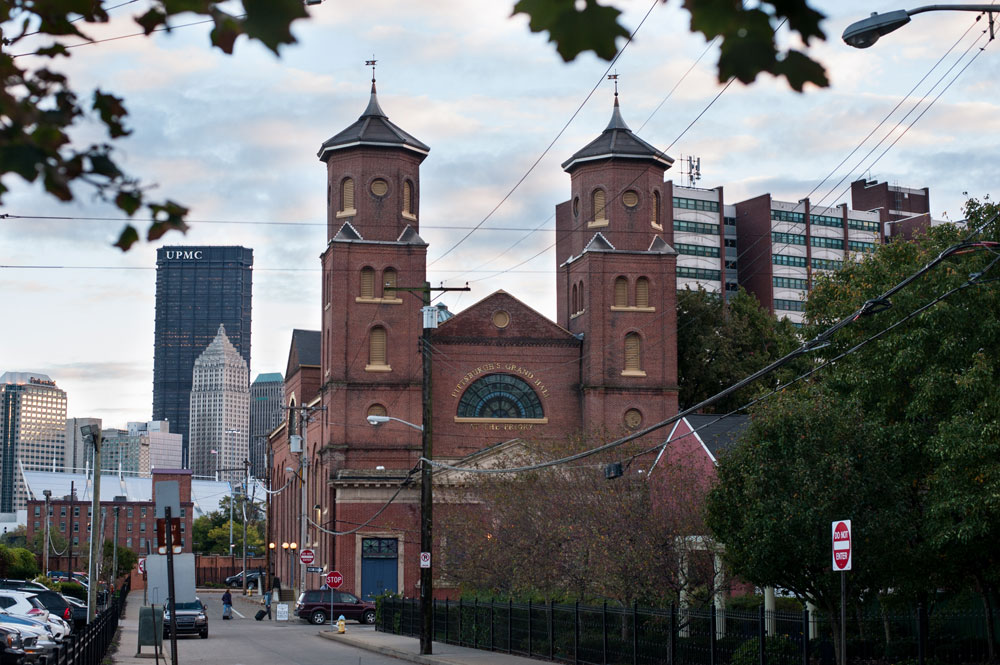
But by the 1980s, the congregation had declined along with the once-fashionable North Side. But its then-pastor and remaining members “didn't give up,” recalled the current pastor, the Rev. Larry Homitsky.
Mr. Schmitt and others in the Allegheny Historic Preservation Society joined their cause. They helped fund pricey renovations through member dues, tours and arranging foundation grants. The church began sharing space with social organizations. Annual choral performances of Handel’s “Messiah” display the church’s revived luster.
The congregation, too, has rebounded, drawing diverse members from the neighborhood.
“Some people have said the church helped start the restoration of Allegheny West,” Rev. Homitsky said. “You could make a case that when you see larger structures being cared for and brought back, people are more willing to invest in the smaller ones.”
Other urban congregations have revitalization stories, but Calvary’s story stands out in how it did so in collaboration with civic groups.
The Union Project
Elsewhere, sanctuaries have found new life after their congregations dissolved.
More than a decade ago, participants in the Pittsburgh Urban Leadership Service Experience — which provides public-service opportunities to young adults — began imagining a community center at the derelict former Union Baptist Church near their Highland Park bus stop.
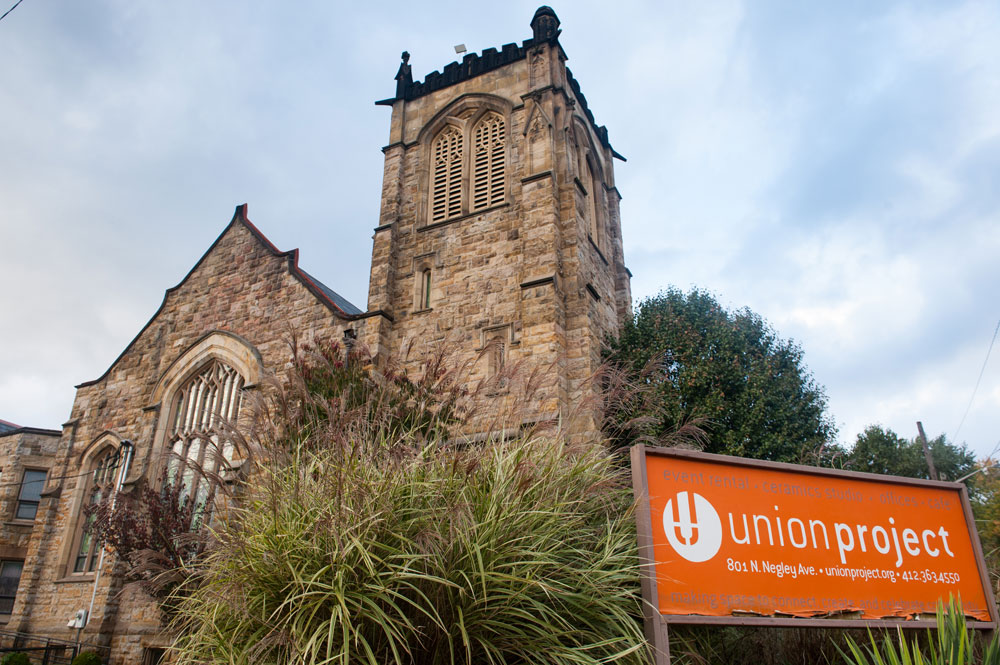
With funding from the Pittsburgh Leadership Foundation, they and others acquired the century-old building. Supporters donated money, time and expertise to refurbish the building. Artists restored the stained-glass windows in an apprentice-like program with local residents.
Today the nonprofit Union Project oversees ceramics classes in its basement and elsewhere, and it rents the former sanctuary space for wedding receptions and other uses.
Its stated mission is to use “the arts to bridge gaps between communities” and is strategically located to do so, near the racially and economically mixed neighborhoods of Highland Park, East Liberty and Morningside.
“We want to be one of the most diverse places in Pittsburgh,” said executive director Jeffrey Dorsey.
Church Brew Works
It certainly helps that Church Brew Works gets featured these days in national magazine articles about Pittsburgh as a hot spot for hipsters and foodies. But long before Pittsburgh was on the tourist map, owner Sean Casey had a more local market in mind.
He and his colleagues had been planning a more intimate pub in a former firehouse. But when the Roman Catholic Diocese of Pittsburgh closed St. John the Baptist Church in Lower Lawrenceville, they purchased the building and adjusted their business plan, re-creating a European-style beer hall in the former sanctuary. Now people can dine at long tables while sipping beers brewed in the former chancel.
Upgrading electrical, plumbing and other mechanicals was “a massive adaptive-use undertaking” but worth it, Mr. Casey said.
Other than some monastic orders, “We were the very first to put a brewery in a church in North America” he said. “The size of the building, and in a sense the way the building still looks pretty original, has made it pretty iconic.”
Since then, he’s considered purchasing other former church buildings in Pittsburgh and other cities. Most didn’t work out, but he is now working to convert the former St. Kieran Church in Upper Lawrenceville into condominiums.
His advice for anyone investing in an old house of worship? “Find some money and fix the roofs. Because if they don’t (get fixed), it goes downhill.”
Then, he said, there’s time to figure out what’s the best for a given location, whether housing, a restaurant, a museum or something else.
Pittsburgh’s Grand Hall
In the 1970s, the state purchased the historic St. Mary’s German Catholic Church in East Allegheny and planned to raze it for a highway that ultimately took a slightly different route.
Business executive Edward Graf and his wife Mary Ann purchased the sanctuary in the 1980s and renovated the adjacent former Benedictine abbey into the Priory hotel.
Then they converted the 1854-vintage sanctuary, overcoming bureaucratic as well as practical hurdles, and reopened it as “Pittsburgh’s Grand Hall at the Priory” in 1995.
With restored stained-glass windows, Corinthian pillars and round arches, the hall has been the setting for charity events, banquets, wedding receptions and even a scene in the 2015 boxing movie “Southpaw.”
John Graf, the buyers’ son and president of Priory Hospitality Group, sees the Grand Hall as continuing the building’s purpose.
“What’s a church but a place of celebration?” he said.
Steeples Project
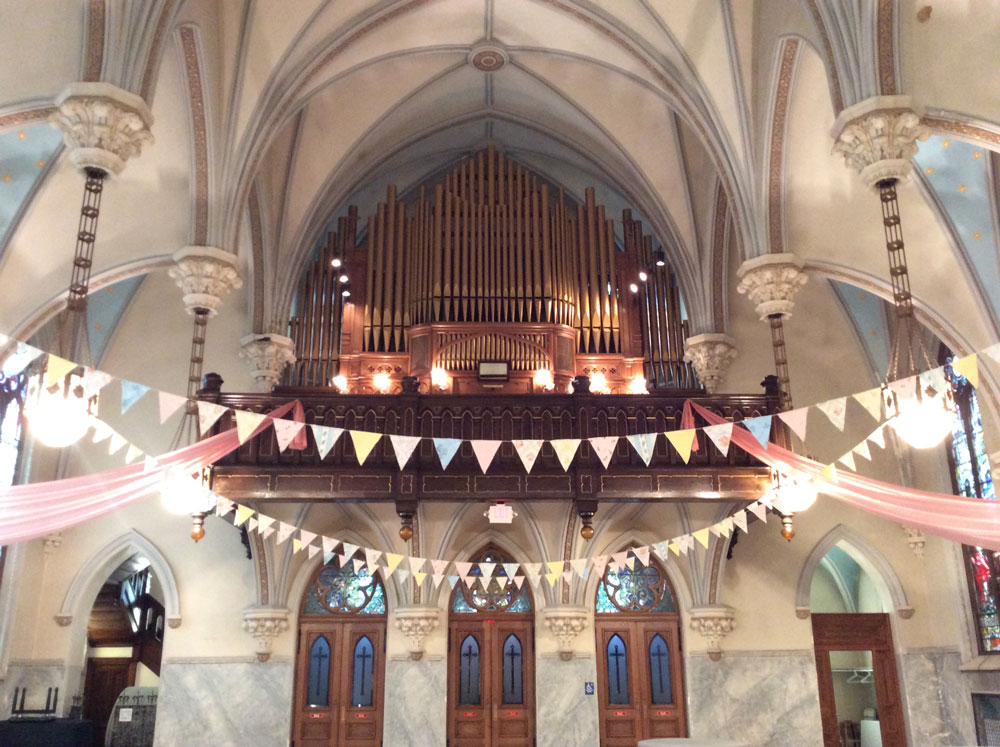
Johnstown’s Steeples Project represents one of the most ambitious church-reuse efforts.
Through foundation grants, fund-raising events and other donations, the group restored the former German church of the Immaculate Conception — a yellow-brick Gothic sanctuary bristling with spires. Now called the Grand Halle on Broad Street, it hosts receptions, organ concerts, Slovak choral recitals and other events.
The Steeples Project sold a second sanctuary, the former Polish St. Casimir, to private owners whose plans include a cultural center and — in a singularly Johnstown touch — a Carpatho-Rusyn restaurant.
The third sanctuary, the former Irish parish of St. Columba, still awaits restoration. The Romanesque sanctuary features elaborate carvings and interior artwork that mixes traditional Christian iconography with infernal scenes of Johnstown’s steel mills.
Mr. Hurst, the Steeples Project manager, hopes the church can host regular dramatic performances that build on nearby museum exhibits about Johnstown’s immigrant and industrial history and its catastrophic flood of 1889.
But planning is in the early stages, and while Grand Halle income is increasing, it ultimately needs to pay for itself.
“From our experience, any reuse strategy has to include a solid earned revenue strategy,” he said. “There just isn’t enough largess out there to keep a building maintained and repaired if you don’t have a way to get that building to earn its own keep.”
David Rasch recalled that when he was a young child attending Mount Lebanon Baptist Church in the late 1960s, hundreds of worshipers would gather beneath the soaring roof of its simple but stately Gothic sanctuary. Everyone from preschoolers to adults would fill the Sunday School classrooms.
It was here that Mr. Rasch was dedicated as a baby, where he was later baptized and where he served in numerous leadership roles.
“This was my church home for not quite 50 years,” he recalled.
Nowadays he mostly has the church to himself. The American Baptist congregation dwindled to a handful of members by the time it closed in 2014 after more than a century.
“It does break my heart,” Mr. Rasch said.
As the sole remaining trustee, he’s been routinely patrolling the church interior and exterior, cleaning out clutter, picking up litter and checking for any repair needs during its more than two years on the real estate market.
Mount Lebanon Baptist (actually located in Dormont), was not alone in its fate. Within a few months of its closing, two churches less than a mile away also closed — Dormont United Methodist Church and Dormont Presbyterian Church.
The closings, within a short space and time, offer a vivid close-up of the changing religious map.
Each church was founded in the early 20th century amid the burst of South Hills suburban development that followed the opening of new trolley lines and the Liberty Tunnels.
Each was booming by mid-century.
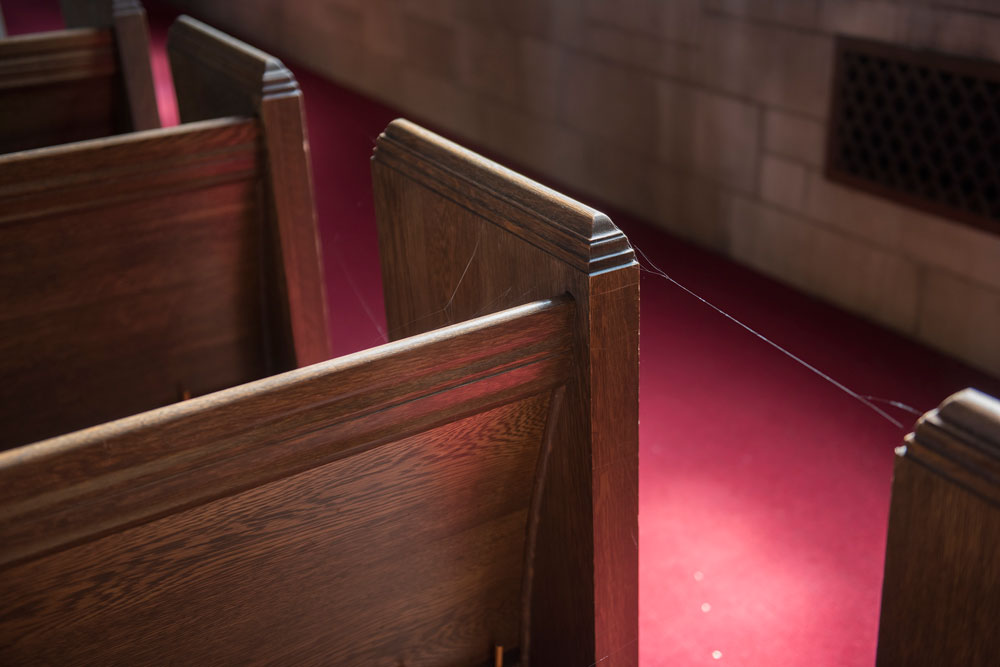
And each dwindled below their ability to sustain themselves into a second century. The Baptist church remains on the market. The former Presbyterian one became a satellite campus of a large evangelical church. The Methodist building is being renovated into a Buddhist temple.
In some ways, the trajectory reflects that of its community. Dormont’s main artery, West Liberty Avenue, also prospered in mid-century with multiple car dealerships and department stores. By the early 21st century, many stores had closed or gave way to bigger-box versions of themselves in newer suburbs.
Many of the original residents, or their children, moved elsewhere, and the congregations didn’t connect as well with newer residents.
Ruth Hutchison began attending Dormont Presbyterian at age 14 in 1949 after her family moved to Dormont. There she was confirmed and married, there her five children were baptized and raised and there members consoled her at times of loss. It was her “home away from home” right through to its 2013 closing.
“There was always something going on for the kids,” Mrs. Hutchison recalled. “There was Sunday School and you learned the books of the Bible and the Ten Commandments. In third grade you got your Bible. You knew you were one of God’s children.”
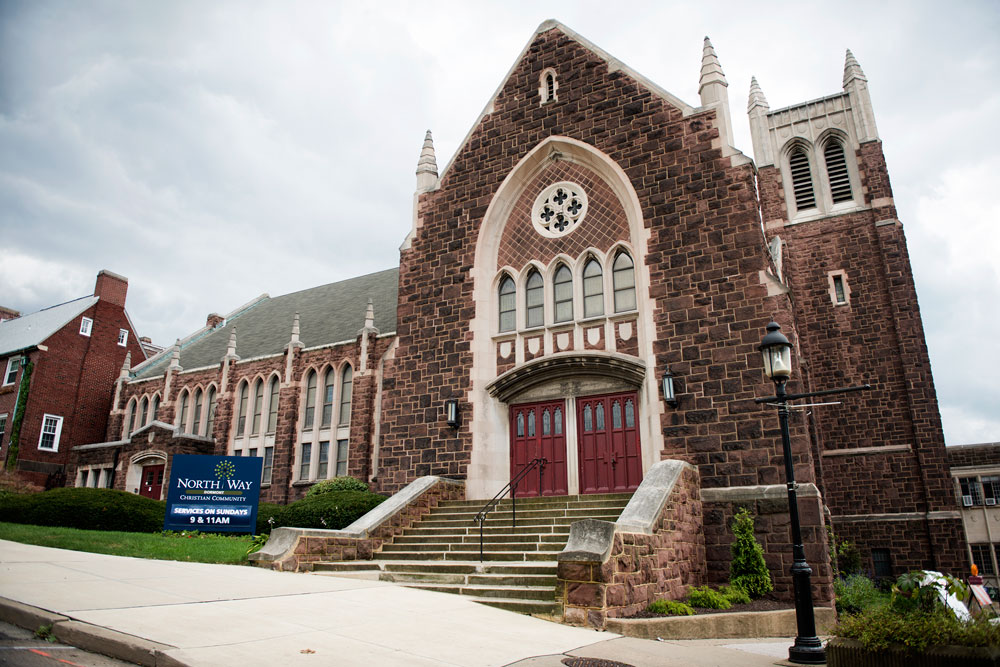
At its peak, “every seat was taken; you had to have ushers find you a seat,” she said. By the end, one could “choose any seat you want.”
She and several other former members now worship at nearby Wallace Memorial Presbyterian Church in Green Tree.
At the Dormont church’s closing ceremony, a speaker tried to encourage members by saying their faith would endure and that “this is just a building,” Mrs. Hutchison said.
“I said, to you, maybe it is,” she said. “It’s God’s home to me. It’s not just a building.”
The Rev. Sheldon Sorge, general minister for the Pittsburgh Presbytery, said the Presbyterian church reached a similar point as many congregations in changing neighborhoods. “They're good people; they just didn’t have the energy to reach into a new community,” he said.
North Way Christian Community, a large evangelical congregation based in Pine, has opened a number of smaller campuses throughout the region. It acquired the Presbyterian sanctuary and now operates its South Hills campus there with two well-attended services. The stained-glass windows and other elements remain, alongside a drop-down video screen and a guitar-driven worship band.
If that narrative reflects the relative vitality of evangelical compared with mainline Protestantism, the Methodist building’s future reflects a growing religious diversity. Statues of Buddhist figures representing mercy and good fortune now stand outside the building.
When renovations are complete, the center will have monks in residence and offer teachings, worship and cultural events.
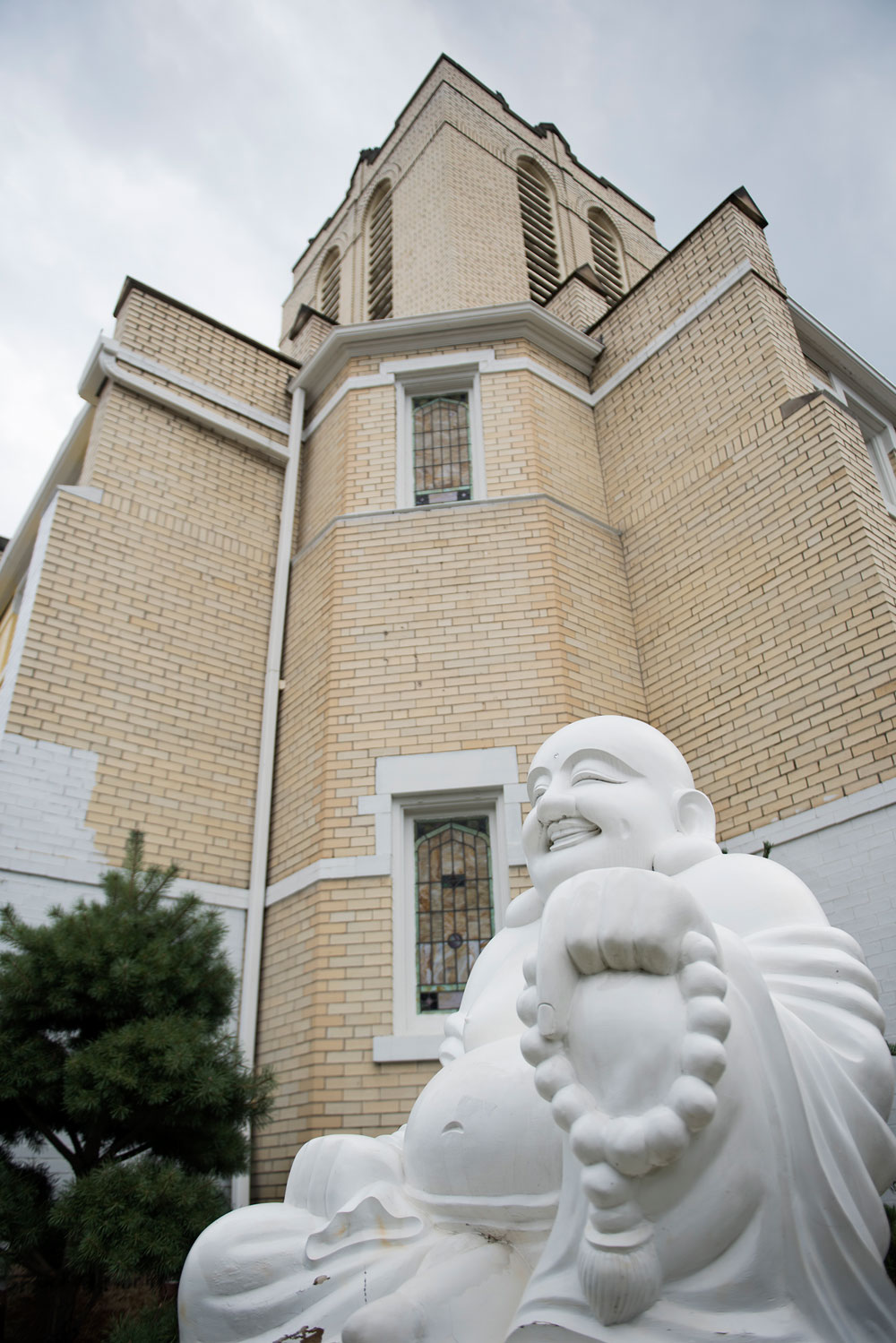
Kim and John Ngo, who operate the Laughing Buddha restaurant in Bethel Park, are founding the temple. They grew up in Pittsburgh, and Ms. Ngo said that when she was young, there was no place to practice her Buddhist faith.
“We want to give something back for the children’s generation, so the children have a place to gather,” she said.
“It’s something to say thank you, Pittsburgh, for giving us the American dream,” she added. Ms. Ngo said she’s grateful to the Catholic Charities workers who helped her mother resettle her family here from Vietnam.
While demographics partly explain the three churches’ fate, each also had its own circumstances.
Mr. Rasch said he began to notice the decline at Mount Lebanon Baptist Church after college.
A couple of pastors “left under less-than-ideal circumstances,” and some members left amid dissension, he recalled.
More recent, valiant efforts at revitalization proved to be too little.
The building has been on the market for more than two years. “What’s really been the largest challenge is the size of it,” said real state agent Karen Reifer of Howard Hanna.
Ms. Reifer said a buyer is showing serious interest in the building.
“We’re going to find a good new life for this,” said Mr. Rasch.
READ MORE
Below is a sampling of former houses of worship in Pittsburgh that are not in active use at present. They are listed by the names by which they are best known or held the longest.
Learn about each building's history and current owner and view photos by clicking the images below.
"Abandoned America: The Age of Consequences," by Matthew Christopher, JonGlez, 2014
"Abandoned Pittsburgh 1: Portraits of the Steel City's Industrial Past," photography by Chuck Beard, Beowulf's Books, 2015
"American Ruins," by Camilo Jose Vergara, The Monacelli Press, 1999
"Pittsburgh Prays: Thirty-Six Houses of Worship," by Abby Mendelson, Tim Fabian and Brian Cohen, Three Blind Mice Press, 2012
"The Synagogues of Central and Western Pennsylvania: A Visual Journey," by Julian H. Preisler, Fonthill Media LLC, 2014
Comments
Login Register Logout